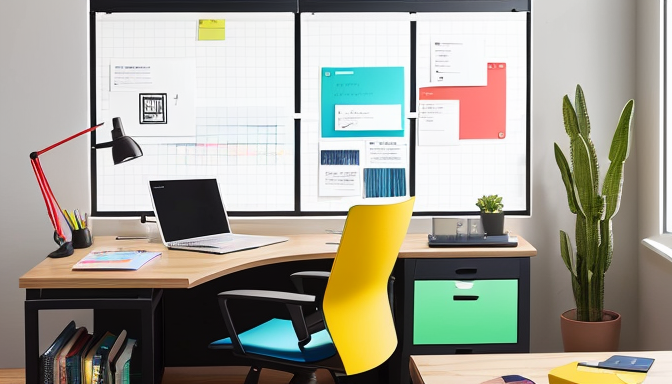If you’re looking to boost your UI/UX design skills, you’ve come to the right place! In today’s fast-paced digital world, having a solid grasp of design principles is crucial. But fear not; you don’t need to start from scratch! There are a plethora of UI kits and UX tools available that can help streamline your web and mobile design process. Imagine having a toolbox filled with ready-made components at your fingertips—sounds like a designer’s dream, right?
These resources not only save you time but also enhance your creativity. With UI kits, you can quickly assemble stunning interfaces without the hassle of creating every element from the ground up. Think of it as having a cheat sheet for design; it allows you to focus on what truly matters—crafting an engaging user experience. Plus, many of these kits are customizable, giving you the freedom to add your unique touch.
Moreover, incorporating the right UX tools can significantly improve collaboration among team members. Whether you’re working with developers, project managers, or other designers, these tools facilitate seamless communication and ensure everyone is on the same page. So, why not dive into this treasure trove of resources? By leveraging these UI/UX gems, you’ll not only enhance your skills but also create designs that resonate with users, ultimately leading to a more successful product.
Essential Tools for UI/UX Designers
When it comes to UI/UX design, having the right tools at your fingertips can make all the difference. Imagine trying to build a house without a hammer or a saw—it’s just not going to work! Similarly, UI/UX designers need a set of essential tools to streamline their workflow and enhance their creative output. One of the most valuable resources is UI kits, which are collections of pre-designed elements that help you kickstart your projects. These kits save time and ensure consistency across your designs, allowing you to focus more on creativity and less on repetitive tasks.
Another category of tools that is crucial for any designer is prototyping tools. These allow you to create interactive mockups of your designs, making it easier to visualize how users will interact with your product. Tools like Figma, Sketch, and Adobe XD are popular choices that offer robust features for collaboration and feedback. By using these tools, you can gather insights early in the design process, which is vital for creating user-centered designs.
Additionally, don’t overlook the importance of user testing tools. These tools can provide invaluable feedback on how real users interact with your designs. Platforms like UsabilityHub and Lookback allow you to test your prototypes and gather data that can guide your design decisions. In a world where user experience is king, understanding how your audience interacts with your designs is essential.
In summary, equipping yourself with the right UI kits and UX tools is like having a treasure chest filled with gems. It not only streamlines your design process but also enhances collaboration and improves user experience. So, why not dive into these resources and elevate your design skills to new heights?

Best Practices in UI/UX Design
When it comes to UI/UX design, understanding best practices can make all the difference between a good design and a great one. One of the first steps is to explore UI kits and UX tools, which can significantly streamline your web and mobile design processes. Think of these kits as your design toolbox, packed with ready-made components that save you precious time. Imagine trying to build a house without tools; similarly, designing without these resources can be a cumbersome task.
Another vital practice is to prioritize user-centered design. Always ask yourself, “How will this affect the user?” This perspective ensures that your designs are not just visually appealing but also functional and intuitive. When users can easily navigate your design, they are more likely to engage with it. For instance, consider the layout of a website; if the navigation is confusing, users will quickly lose interest and bounce away.
Additionally, consistency is key. Maintaining a uniform style across your design elements fosters a sense of familiarity and trust. Utilize a style guide to keep your typography, colors, and buttons aligned. You might think of your design as a symphony; each element must harmonize to create a beautiful experience.
Finally, testing is crucial. Don’t just assume your design works; put it to the test! Gather feedback and be willing to iterate. Remember, even the best designers started somewhere, and learning from mistakes is part of the journey. So, gear up, embrace these practices, and watch your UI/UX skills soar!
Frequently Asked Questions
- What are the essential tools for UI/UX design?
There are several must-have tools that can significantly boost your design process. Tools like Sketch and Adobe XD are great for wireframing, while Figma is perfect for collaboration. Don’t forget about InVision for prototyping and user testing!
- How can I improve my UI/UX design skills?
Improving your skills is all about practice and learning. Try to seek feedback on your designs, study user behavior, and explore design communities. Watching tutorials and following design blogs can also provide fresh insights!
- What are some best practices in UI/UX design?
Some foundational best practices include keeping the user in mind, ensuring accessibility, and maintaining consistency throughout your designs. Remember, a great design is not just about aesthetics; it’s about creating a seamless user experience!
- Can beginners learn UI/UX design?
Absolutely! UI/UX design is very approachable for beginners. There are tons of resources available online, including free courses and tutorials. Just dive in, experiment, and don’t hesitate to ask for help when needed!